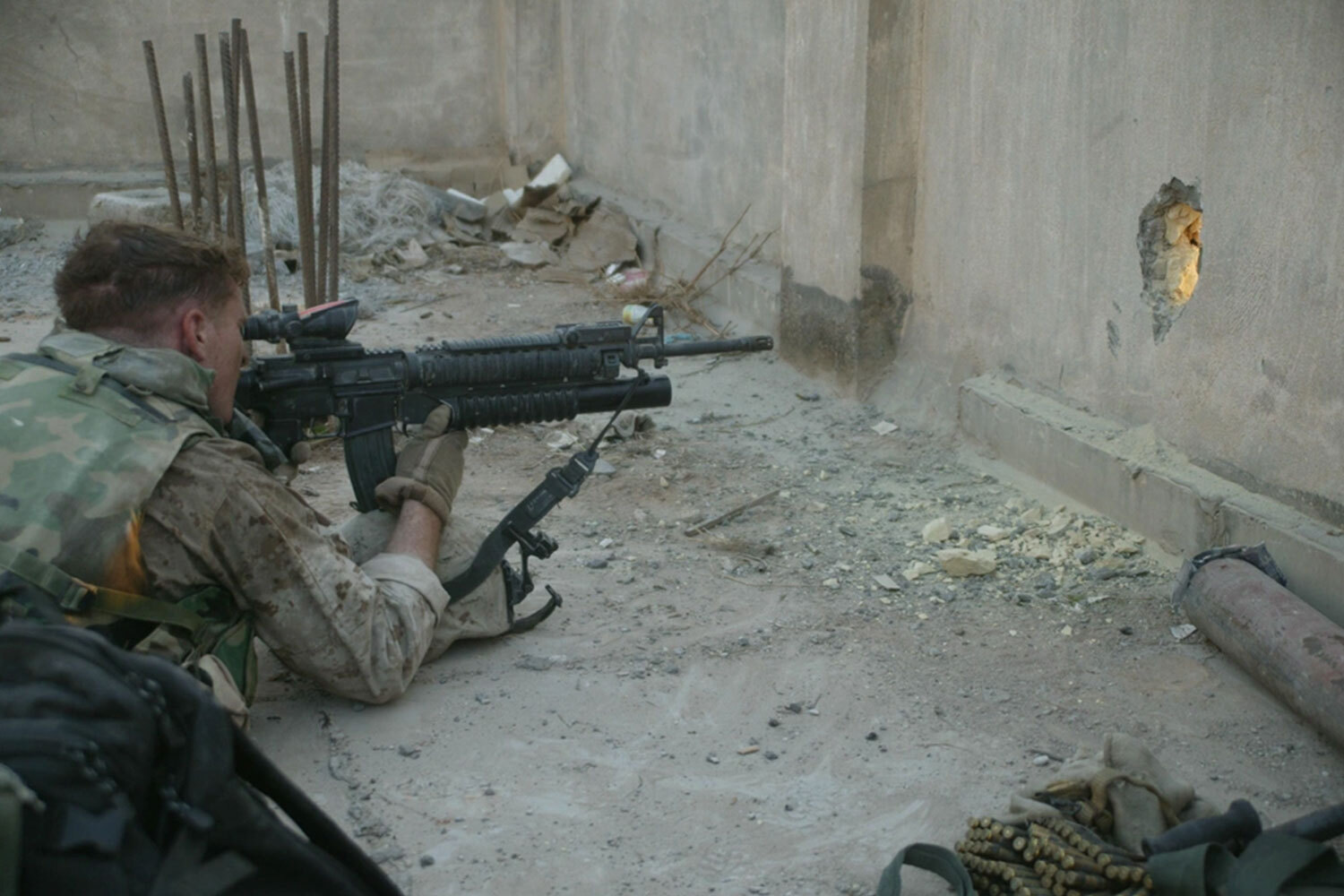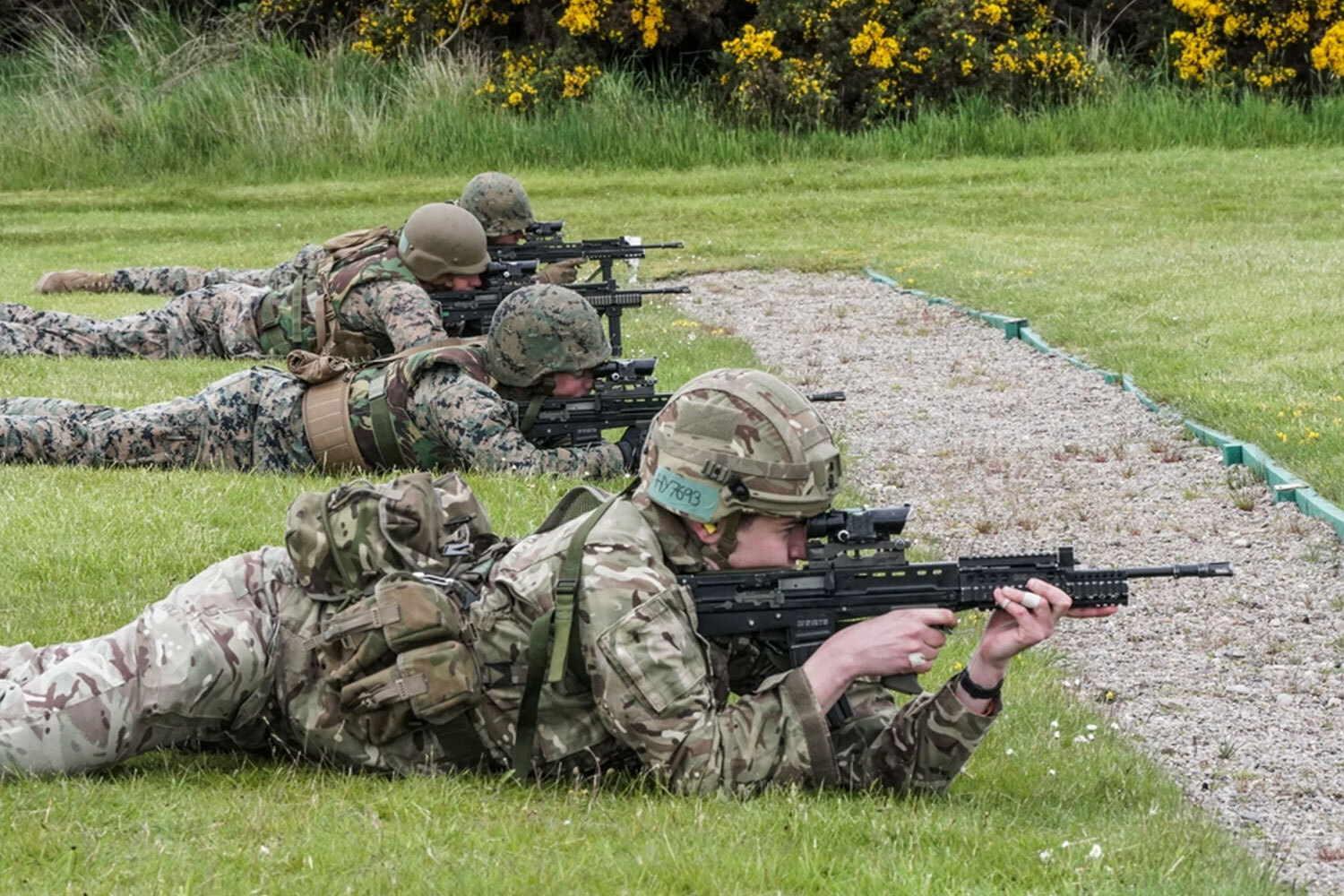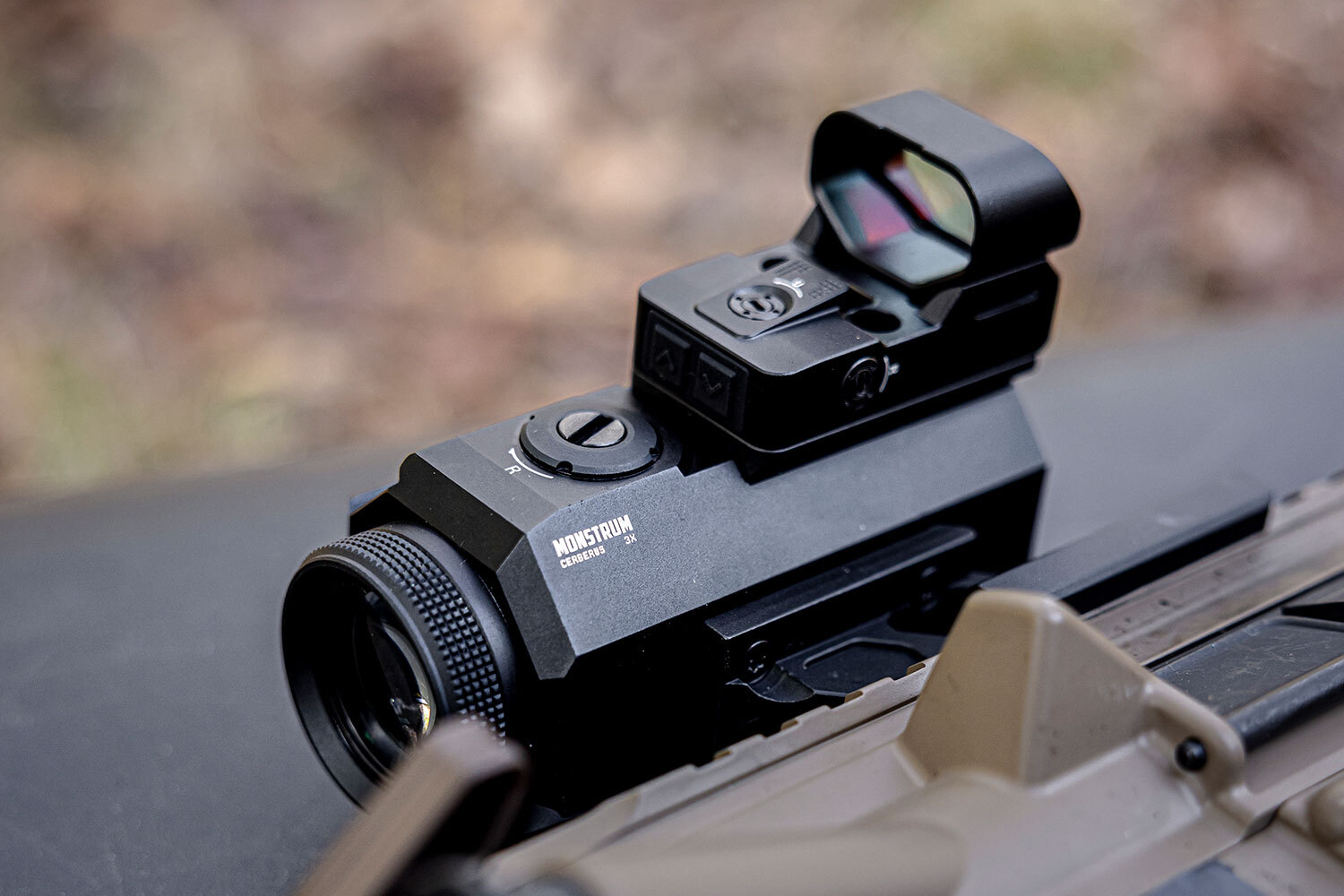
Is a Prism Sight right for you?
Posted by Monstrum on Oct 28th 2025
Prism Sight vs. LPVOs & Red Dots: The Complete Guide
You just bought a new rifle (congratulations!) and now you’re faced with the age-old question of what optic to put on it. You could put a red dot sight on it for lightweight fast target acquisition up close or you could put an LPVO on it, so you can shoot both up close and at long range, but these tend to be heavy. All optics strike a balance between capability and weight savings, but there is a third option that lies somewhere between the two. An optic that provides some of the magnification of an LPVO with some of the weight savings and speed of a red dot sight; prism sights.
What is a Prism Sight?
Prism sights are compact magnified optics that are typically fixed magnification and have an etched reticle. They are shorter and simpler than conventional telescopic sights and they also tend to be more rugged. For this reason, they are a popular choice for militaries around the world.
Modern prism scopes are usually 1x magnification up to 6x. They can be made to higher magnifications, but they typically don’t for reasons we’ll explain later. They tend to have tighter eye boxes the higher the magnification and historically they have poor eye relief, although modern designs have improved in this regard. Newer 1x prism sights in particular have very generous eye relief. One quirk about prism sights is that even the 1x models cannot co-witness with iron sights due to the way light passes through them.

History of Prism Sights
The basic design for modern prism sights originates from binoculars which use prisms to achieve magnification instead of a series of lenses making for a much more compact form factor that could easily be used offhand (think binoculars vs. an old spyglass).
The earliest prism scopes to be used in a military context came about during the First World War where they were used for everything from rifle scopes to artillery sights, but it wasn’t until the late 1980’s that modern manufacturing would yield practical modern prism scopes that could be used and issued en masse.
The first modern prism sight that saw widespread military service was the Trijicon ACOG® which was designed in 1987. The ACOG set a new standard for prism sights because of its ruggedness and brightly illuminated reticle.
Today, prism sights are ubiquitous with many different designs available, though they have largely fallen out of favor with the U.S. military. Both the U.S. Army and Marine Corps have opted for LPVOs for their new standard issue rifles and their older ACOG sights are currently being phased out. While prism sights are not the primary optic of choice for the U.S. military any longer, many prism sights still remain in active service with other military forces globally and they still remain a popular choice among civilian gun owners.
What are Prism Sights Good For?
Prism sights remain a popular and relevant choice among the world’s militaries because they are relatively compact and lightweight while providing shooters with magnification to identify and engage targets at range. What they lack in speed and extended range capability, they make up for in simplicity and weight savings. Compared to an LPVO, they are relatively easy to train recruits on.
Most prism sights from 3x-5x excel at shooting at medium distances, though they are slower to use at short ranges and harder to use at extended ranges. 1x prism sights can perform nearly as good as red dot sights at close quarters, though they still have an eye box which red dots do not. Up close, 1x prism sights may even edge out even good LPVOs because they have a long eye relief.

Advantages of Prism Sights vs. LPVOs
Let’s imagine you were to engage a target at range using an LPVO, you would first have to adjust the magnification to identify your target before engaging (assuming you keep your optic at the lowest magnification by default). If you’re using a first focal plane scope, once you ID your target, you might then have to consider whether you’re at the correct magnification to use the rangefinding stadia on your reticle. Once you have the correct range, you would then hold over and take your shot. But if you were using a prism optic in this same scenario, you would skip all of these steps because prism sights are fixed magnification, your ranging stadia always work because the magnification never changes. You would simply ID and range your target, hold over, and take your shot.
Advantages of Prism Sights vs. Red Dot Sights
Let’s imagine another scenario where you have a red dot sight and a magnifier instead. You spot the target at range, but have difficulty Identifying it, you flip your magnifier into place, but the red dot becomes magnified with it. Observing around the bloom of your dot, you identify the target, but you have no ranging stadia to reference, just a dot floating in space, so you guesstimate your holdover and take the shot hoping you hit your mark. Were you in this scenario with a prism sight, again you would save time and steps by virtue of the prism sight’s simple fixed magnification, you also wouldn’t need a second optic to achieve magnification.
These scenarios describe the ideal use-case for prism scopes, but no optic is infallible and prism sights are no exception.

Disadvantages of Prism Sights
Prism sights are magnified optics. Like traditional telescopic sights, they have limited eye relief and typically a small eye box. This alone puts them at a significant disadvantage to red dot sights at close range because a shooter using a prism sight is bound to a very specific cheek weld on their rifle where a red dot shooter is not.
Because prism sights are fixed magnification, they are also inferior to LPVOs or MPVOs at longer ranges. Because they are limited to magnifications from 1x to around 6x, they would be hard pressed to identify and engage targets at ranges beyond 400 yards in most scenarios. There are some prism sights that can deliver higher magnifications, but because of the way prisms magnify light, they increase in size and weight dramatically at higher magnifications making them an impractical choice beyond 6x.
While prism sights excel at that middle of the road between close and long range shooting, they struggle at both ends of the spectrum. Shooters can overcome some of the shortcomings of prism sights by pairing them with piggy back or offset red dot or iron sights, but there aren’t many options for extending their magnification out to range, at least not until recently. Newer prism sights work with magnifiers and now have some extended range capability.
Are Prism Sights Right for You?
For the average civilian shooter, there is no wrong choice for a rifle optic. Every design has tradeoffs, but if you want one optic that can cover medium range shooting well and close and long range shooting adequately, prism sights are a good option. If you want magnification without too much weight, prism sights are for you. If you want simplicity and don’t care so much about speed or extended range performance, prism sights are for you.
In addition to their compact form factor, prisms also have another advantage over red dot sights: etched reticles. Shooters with astigmatism who struggle to get a clear sight picture out of red dot sights will have no such issue with prism sights. Etched reticles also do not rely on batteries to work like red dot sights do. If your battery dies in a prism scope, you simply won’t have an illuminated reticle, but you will still have an otherwise fully functional optic. For that reason, prism sights are also a good choice for a long-term survival rifle assuming batteries may or may not be readily available.
Conclusion
To summarize, prism sights aren’t perfect, but they do offer a compelling blend of compact simplicity and magnification that neither red dots nor LPVOs can match. They are less capable at long range though much smaller and lighter than LPVOs, and they are much better than red dots for shooting at distances without being too much heavier.
You should consider buying a prism sight if you’re looking for an optic with an etched reticle that has a simple fixed magnification while still giving you some of the speed of a red dot.
Explore our full line of prism sights including the Marksman, Ruckus, Cyborg, and Blackbird series.

